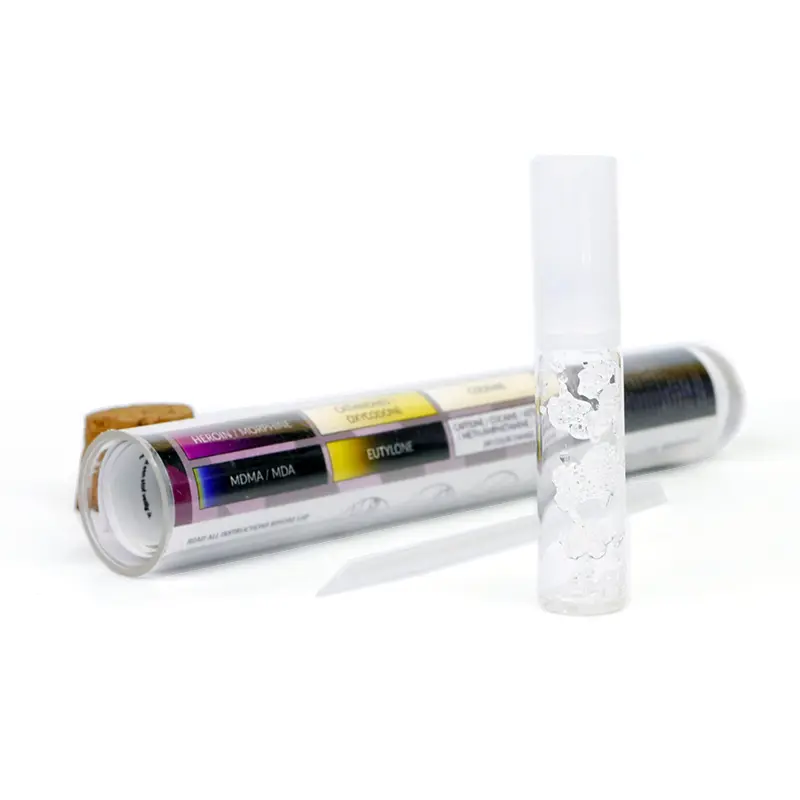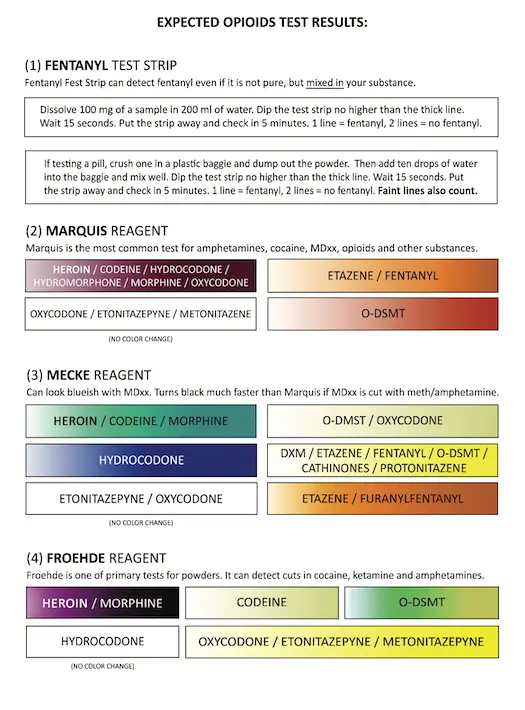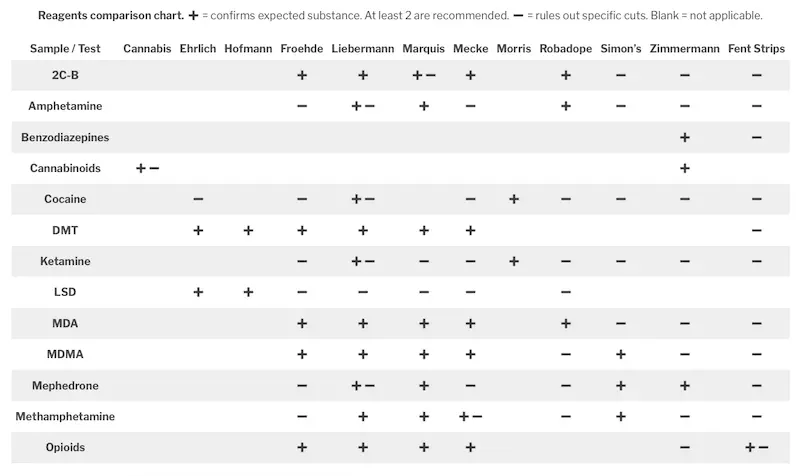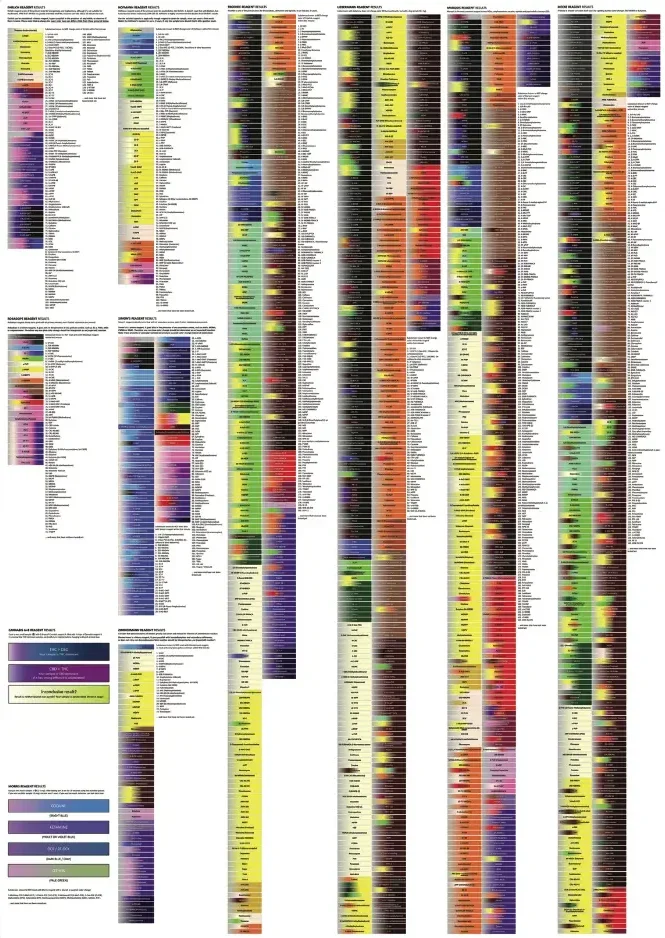GUIDE How to test Heroin (Opioids)?
How to test Heroin (opioids): if you intend to use a psychoactive substance first you need a test kit to check purity. Pure heroin can’t be identified by appearance. Check your sample with a single or multi-use heroin test kit.
Heroin tester
Recommended heroin testing kits
Recommended multi-use Heroin Reagent Test Kit includes reagents Marquis, Mecke, Froehde and fentanyl test strips. Reagents are required to identify heroin or other opioids, while fentanyl test kit is irreplacable to detect presene of fentanyl, even if mixed in and present in trace amounts. To discover full ingredients and estimate heroin % pair reagents with the Full TLC Purity Test Kit. To detect fentanyl use the fent strips.
STEP ONE How to identify heroin?
How to use reagent tests?
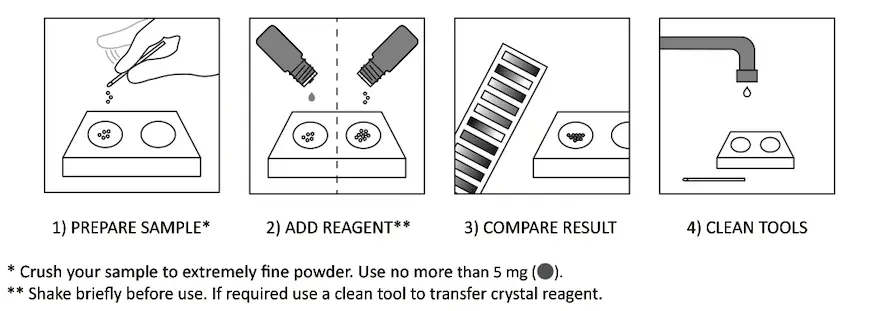
TL;DR: Below is an image with a quick cheat sheet how to use the Heroin Test Kit and further down you can check out more detailed guide how to test heroin. Use the heroin reagent test chart to see how to use Marquis reagent, Mecke and Froehde. Check the expected results.
Heroin test results chart:
| TEST | Heroin |
| MARQUIS | Reddish purple |
| MECKE | Green-blue |
| MANDELIN | Red > Dark brown |
| LIEBERMANN | Purple / black |
| FROEHDE | Purple red > black |
| EHRLICH | No color change |
| HOFMANN | No color change |
| SIMON’S | No blue color change |
| ROBADOPE | No pink color change |
| MORRIS | Green |
| ZIMMERMANN | No color change |
| CANNABIS (4-AP) | No color change |
Heroin reagent test chart
What are heroin test kit reagents used for?
| SAMPLE | RECOMMENDED HEROIN REAGENT TESTS |
| HEROIN / CODEINE / O-DSMT / 2C-B / MDMA / MDA / METH/AMPHETAMINE |
|
Reagent tests indicate presence of a substance, therefore can either help confirm presence of the expected compound or help rule out certain cuts.
- Marquis – main test for most powders, secondary test for ketamine, mephedrone and psychedelics
- Mecke – main test for most powders, secondary test for cocaine, ketamine and mephedrone
- Froehde – main test for most powders, secondary test for ketamine and amphetamines, long shelf life
- Single use heroin test kit includes Froehde reagent
- Multi use heroin reagent test kit includes reagents Marquis, Mecke and Froehde
Froehde reagent is the main test for heroin as it can tell it apart from codeine. It should not be used alone, requires Marquis and Mecke to confrm presence of specific opioids.
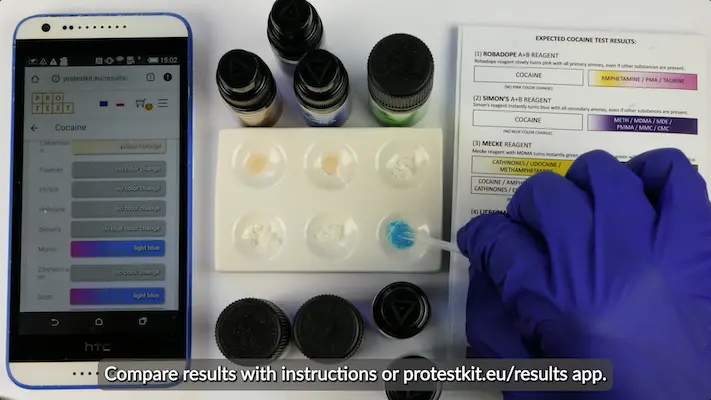
Negative heroin test kit results
What is fentanyl?
STEP TWO How to test heroin purity %?
To discover all adulterants and estimate quantity pair reagent tests with a TLC (Thin Layer Chromatography) Purity Test Kit. TLC purity tests alone don’t identify substances and are best paired with at least 1-2 reagent tests. Thin Layer Chromatography is one of classic substance analysis methods. It works by separating different compounds depending on their solubility in chosen TLC testing liquid (eluent). To precisly estimate heroin purity pair a reagent test kit with the Full TLC Purity Test Kit.
How to test quality of heroin?
Qualitative TLC:
TLC test works by separating substances present in a sample, each detected spot indicates a different substance.
- You can use an already confirmed sample for reference – if both compounds show up at the same height on the TLC “card” that indicates they can be the same substance.
- You can use any substance for reference after establishing their relation – if substance X shows up twice as high on the same testing “card” as substance Y, you can expect them to keep that ratio.
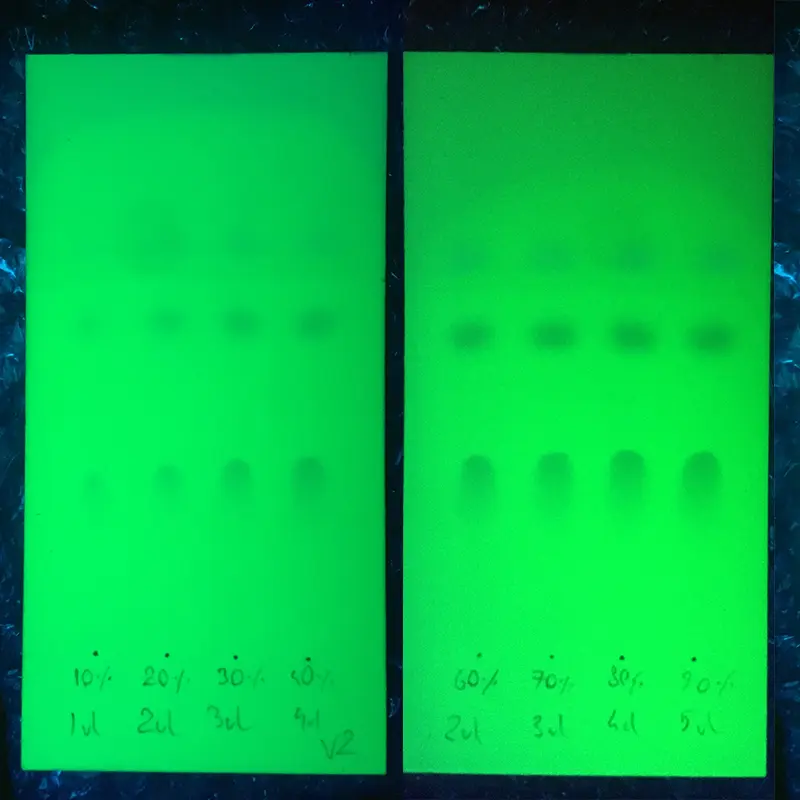
TLC Cocaine Purity Test potency scale
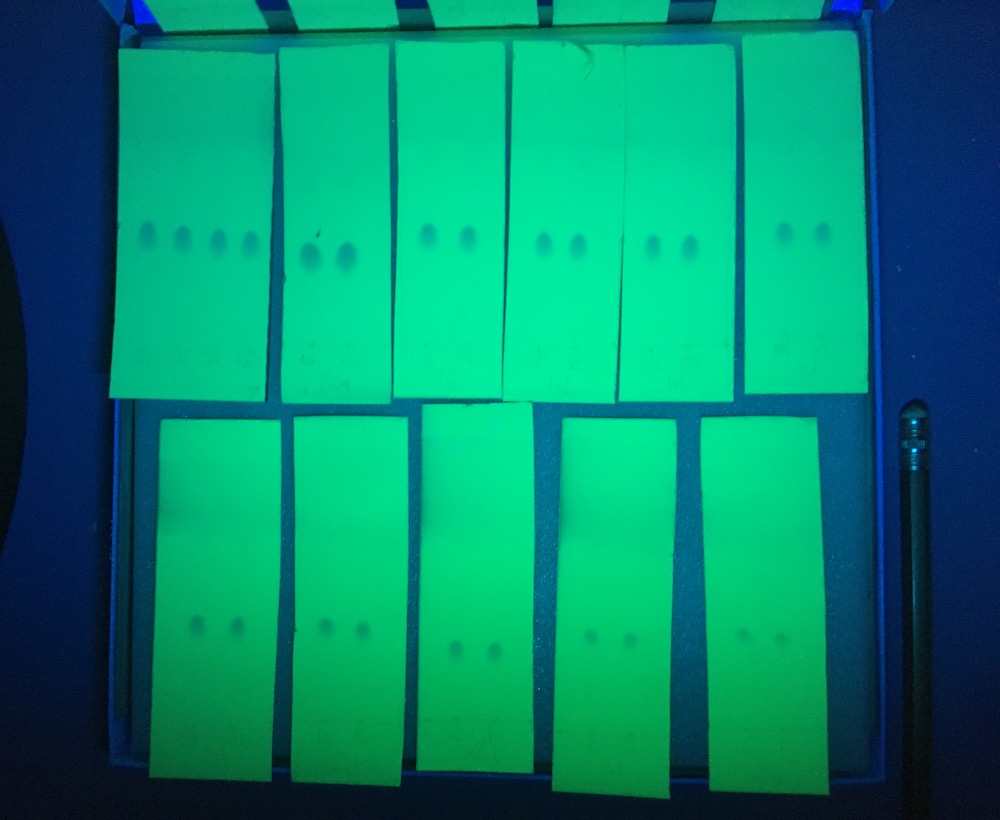
TLC MDMA Purity Test potency scale
How to test quality of heroin?
Semi-quantitative TLC:
TLC helps estimate quantity (potency). The bigger the size of the detected spot, the bigger the amount of measured substance. Note that different substances need different calibrated rulers and often different testing liquids (eluents).
- One spot indicates a pure substance. If your sample fully dissolved in testing liquid and only one spot was detected on TLC then your substance is pure. Trace amounts of impurities might not be detected, do not rely on TLC for fentanyl testing – get also fentanyl test strips.
How to use TLC purity tests?
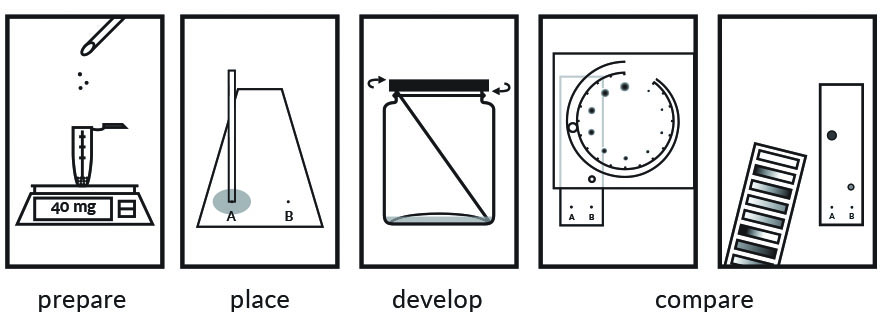
Questions?
How to test heroin for fentanyl?
Use fentanyl test strips (a fentanyl test kit)
METHOD 1
If testing a benzo/opioid pill, crush one in a plastic baggie and dump out the powder. Then add 10 drops of water into the baggie and mix well. Dip the test strip no higher than the thick line. Wait 15 seconds. Put the strip away and check in 5 minutes.
METHOD 2
Mix 100 mg of sample in 200 ml of water. Dip the test strip no higher than the thick line. Wait 15 seconds. Put the strip away and check in 5 minutes.
COMPARE RESULTS
1 line = fentanyl, 2 lines = no fentanyl. Faint lines also count. Ignore fentanyl tester results after 5 minutes.
To detect all ingredients and estimate their amount pair reagents with a TLC purity test kit.
A positive or negative test result does not indicate if a substance is safe. No substance is 100% safe.

